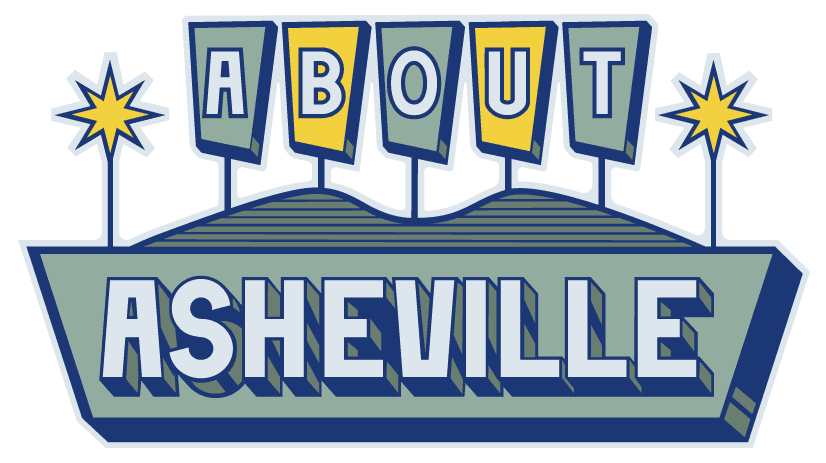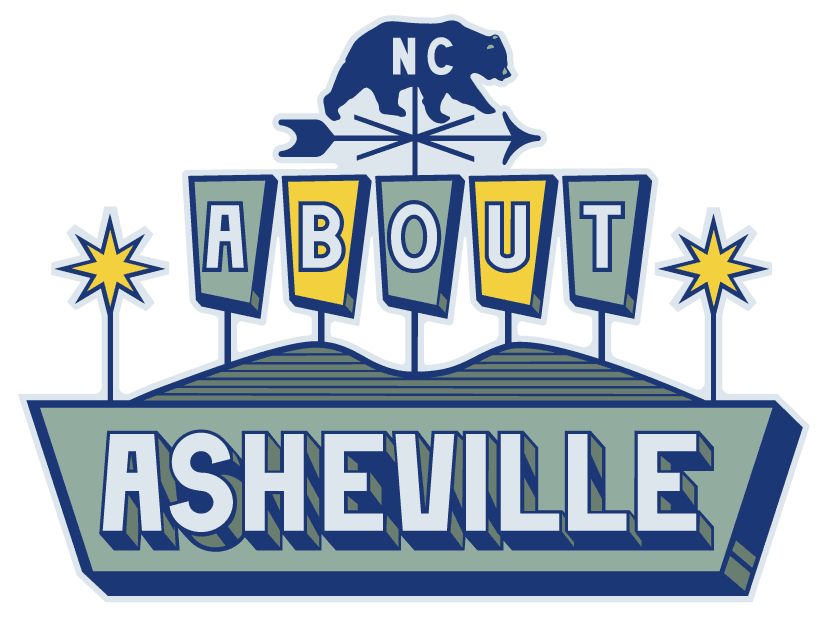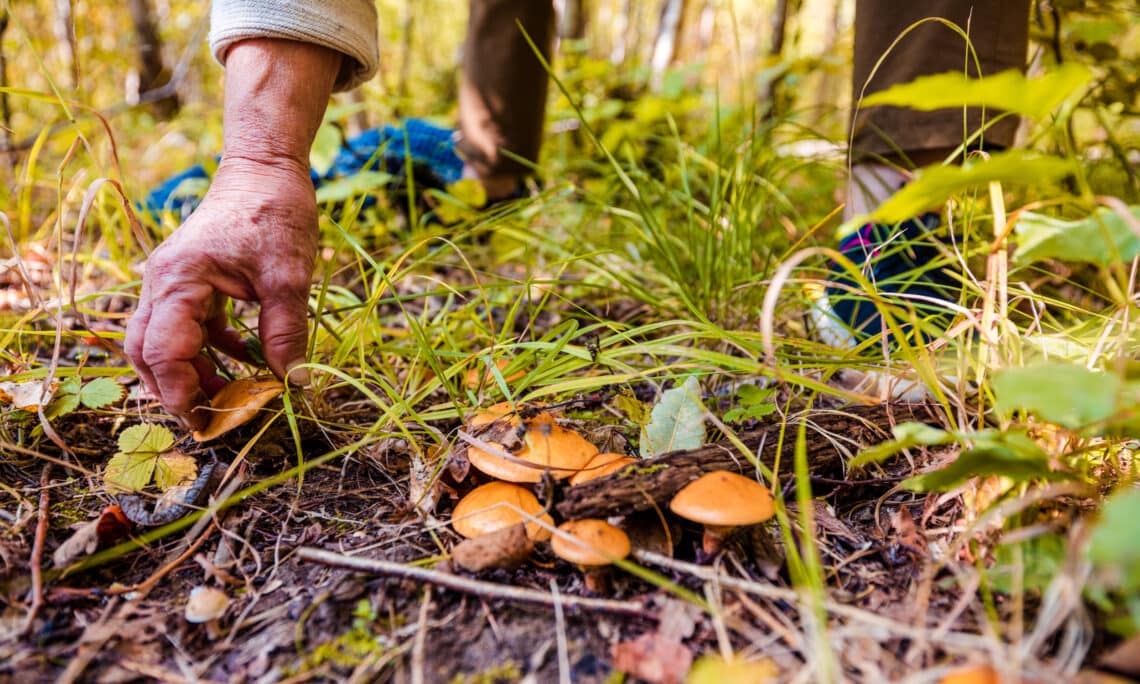
A Guide to Springtime Foraging in Asheville
Although mild compared to many other areas of the country, I, for one, feel like winter always drags on, even in Asheville. Maybe it’s harder here because of the anticipation of what’s to come.
Everything coming back to life in the springtime, to me, is like coming back home to myself. The birds are chirping in the blue sky, the sunshine is warming my skin, and the bare landscape of the woods and scenery starts to re-adorn itself in spatterings of green.
The whole vibe is iconic. One of the reasons I love spring in Asheville is because of the opportunities for foraging that begin to present themselves during this season. From morels to wild violets, here are a few things to look out for while foraging in Asheville in the spring!
Disclaimer: This post may contain affiliate links. If you make a purchase or booking through one of our links we may earn a small commission (don’t worry, it’s at no extra cost to you).
A Guide to Springtime Foraging in Asheville
I’m going to say the obligatory warnings when talking about foraging. I am not an expert. I have not gone to school for herbalism or native plants. I do my best to be well-read and well-educated, and I never pick something if I have even the slightest doubt about what it is.
Be sure to look up any possible toxic look-alikes of anything you’re looking to harvest. Google is your friend here, as well as a good WNC guide handbook. I like to have more than one tool at my disposal.
With that being said, here are some of my favorite spring finds!
1. Dandelions
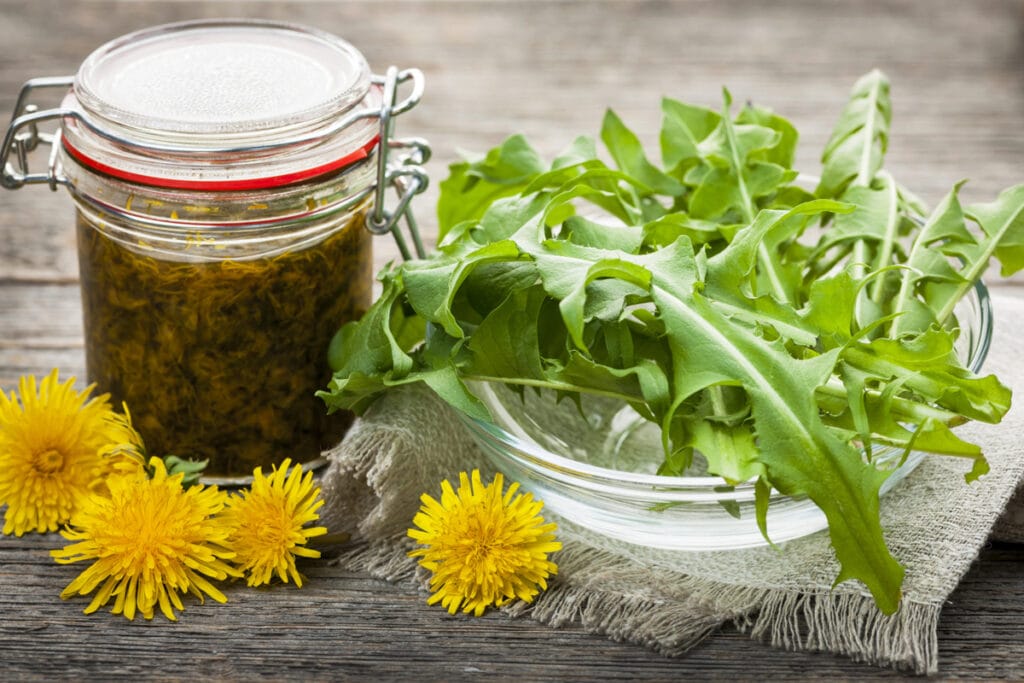
You may not know that this weed can be eaten, but it certainly can! Once the flowers have fully opened and are a bright yellow, they are ready for picking. Eating the greens raw, sauteed, or throwing the leaves into a salad takes little to no prep and is a great introduction to foraging –because everyone knows what a dandelion looks like!
People have been using the roots for years as a coffee substitute, and I like to pick a handful of flowers out of my basket to save for tea. Dandelions are known for their detoxifying properties and liver function capabilities.
Personally, I love making jelly with mine. You do need quite a bit, but if your yard is anything like mine, that shouldn’t be a problem. I’ve heard people say dandelion jelly is like bottled sunshine, and I’d have to agree. It makes for a fun foraging with kids activity and is quite rewarding.
2. Chickweed
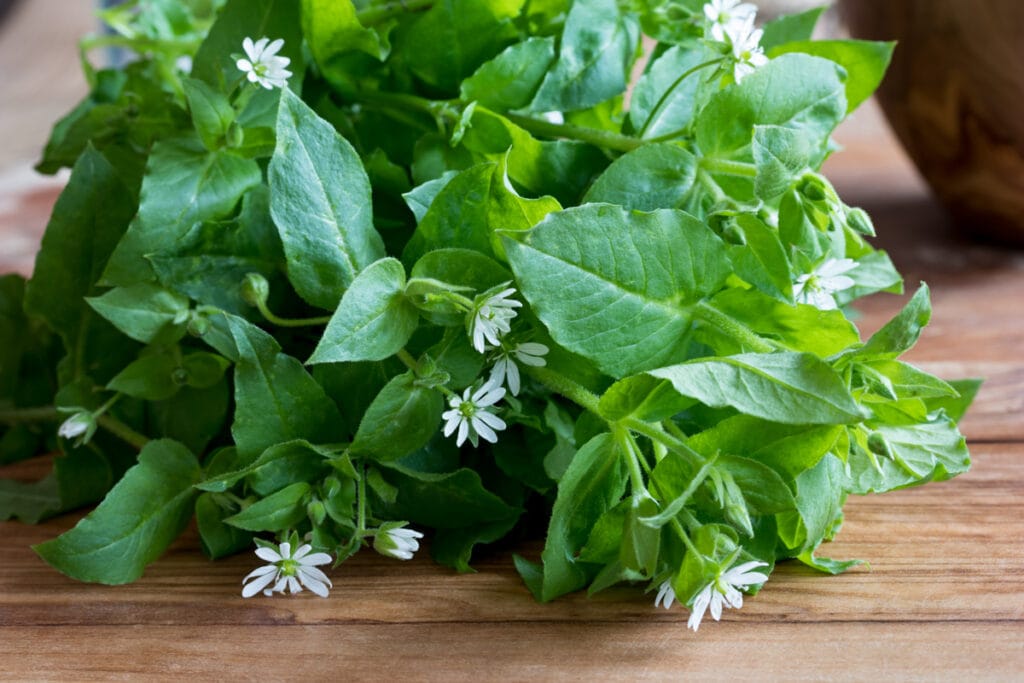
An annual hardy flower, chickweed can be found almost all over the world. Often forgotten and disregarded as ground cover, chickweed has tiny white petals and is usually found in large clusters.
Edible and nutritious, it is often used raw in salads. I have used it in place of basil to make a chickweed pesto! Modern herbalists often prescribe it for any iron deficient problems, as well as aches and pains. This plant is also a favorite for chickens, so this year, my goal is to keep my chickens away from where I know the best patch of chickweed sprouts up in my yard.
3. Wild Violets
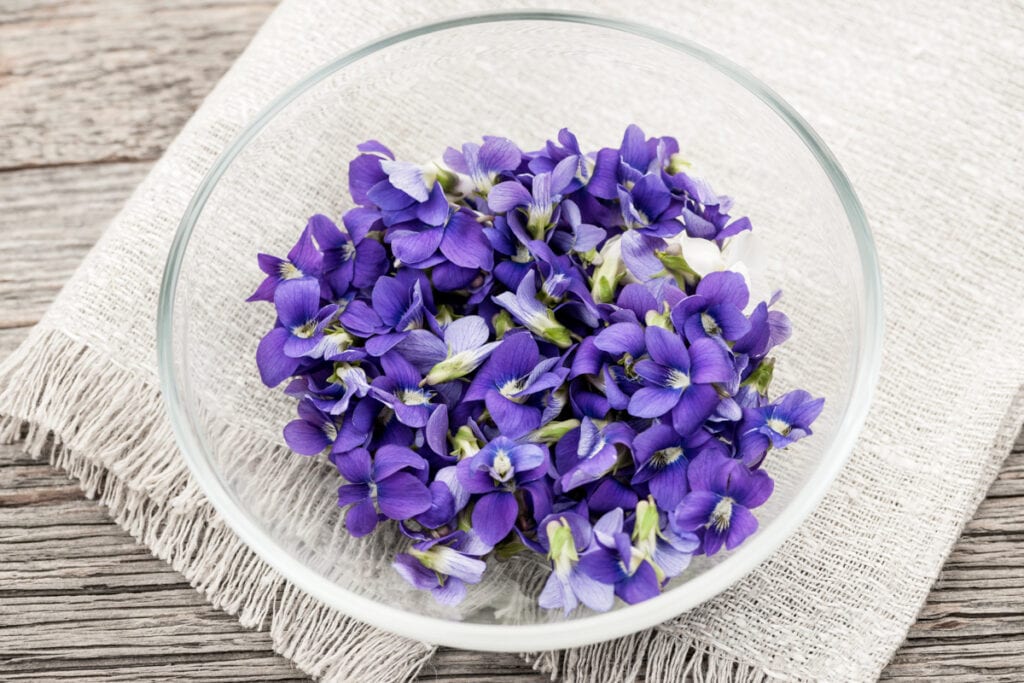
These bright purple flowers are always a welcome sight in my yard! Both leaves and blossoms of this vibrant plant are edible, either raw or cooked, and extremely high in Vitamin C. Violets are another great contender to make jelly with, but this year, I’m setting my eyes on violet syrup.
Starbucks will have no hold on me this spring with fresh violet syrup in my iced coffees. Wild violets also go great in a salad. They can be used in a vinegar as well or as a key ingredient in a handmade lotion.
4. Morels
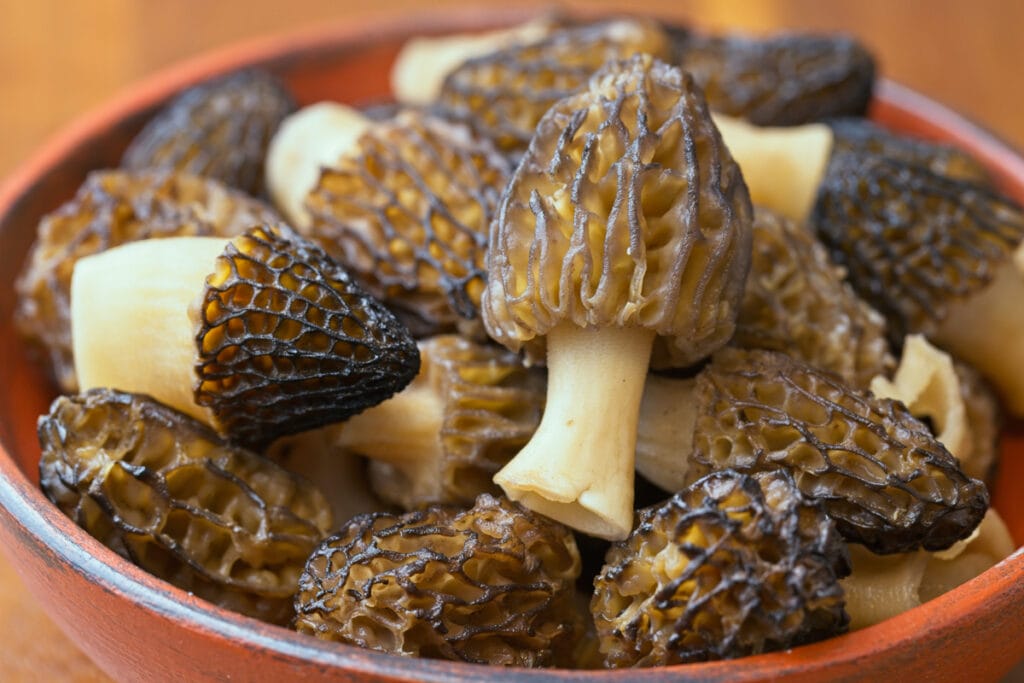
I will say, this mushroom is either going to be worth the wait for me or going to be the death of me. I have been searching for a morel, hard, for five years, and have had no such luck. These coveted mushrooms are more elusive to me than a leprechaun, but rumor has it they’re worth it.
There is even a bustling Facebook group of WNC Mushroom Foragers that will post the time, elevation, which direction the flush was found, and near which trees. I may have had to silence notifications from such groups before I ripped my hair out in envy.
But they are a vat of knowledge if you want to step up your morel game. When hunting for morels, it’s a good time to brush up on your tree knowledge. I usually have a book handy.
Slippery elm, ash, and oaks will give you a good indication of where to look, as well as dead or fallen trees. Once the nights have warmed and the ground is wet is when to start the slow and steady hunt. They love to blend in with leaf cover, but once you find one, chances are you’ll find a lot more.
5. Ramps
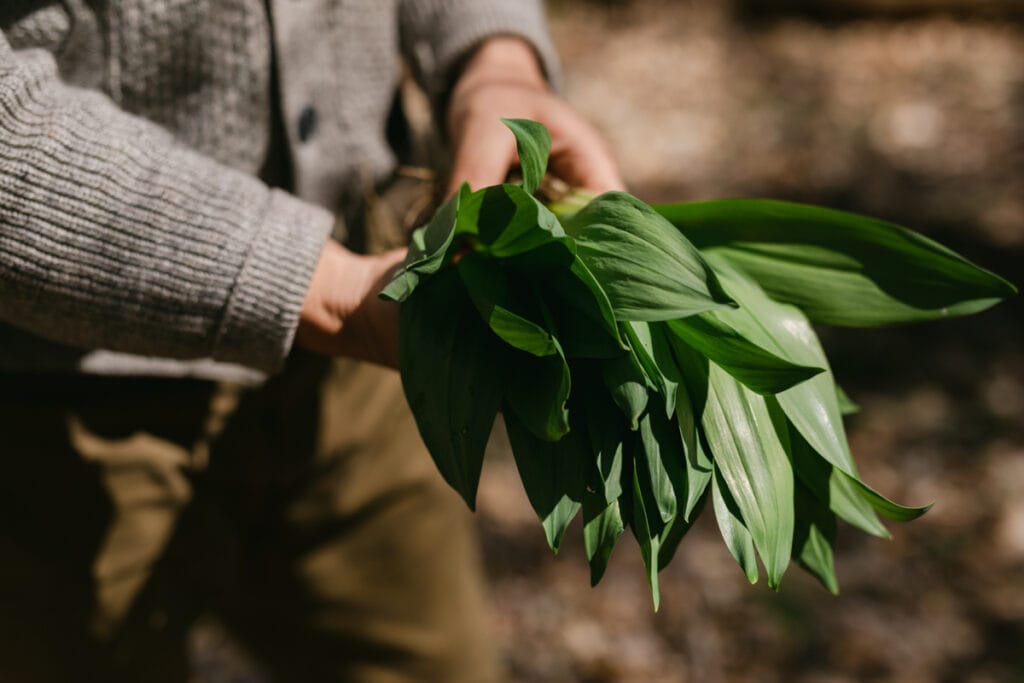
Starting in late March is a local favorite, ramps. Sometimes called wild leeks for their similar flavor and look, they are an Appalachian delicatesse. There were traditionally considered tonic-like for their abundance of minerals and vitamins after the dark winter months.
Found in deep woods, and near streams or rivers, and harvested with a tender hand, their flavor is rich and pungent. They’re popular sauteed and can be used as a pesto, pickled, or put in soups or frittatas
This plant has unfortunately been over-picked in recent years, and some argue that the practice of over-harvesting, usually for profit, has caused the species to suffer. The one-thirds rule is imperative in situations like these, or the “don’t pick more than you can eat today” rule.
6. Stinging Nettle
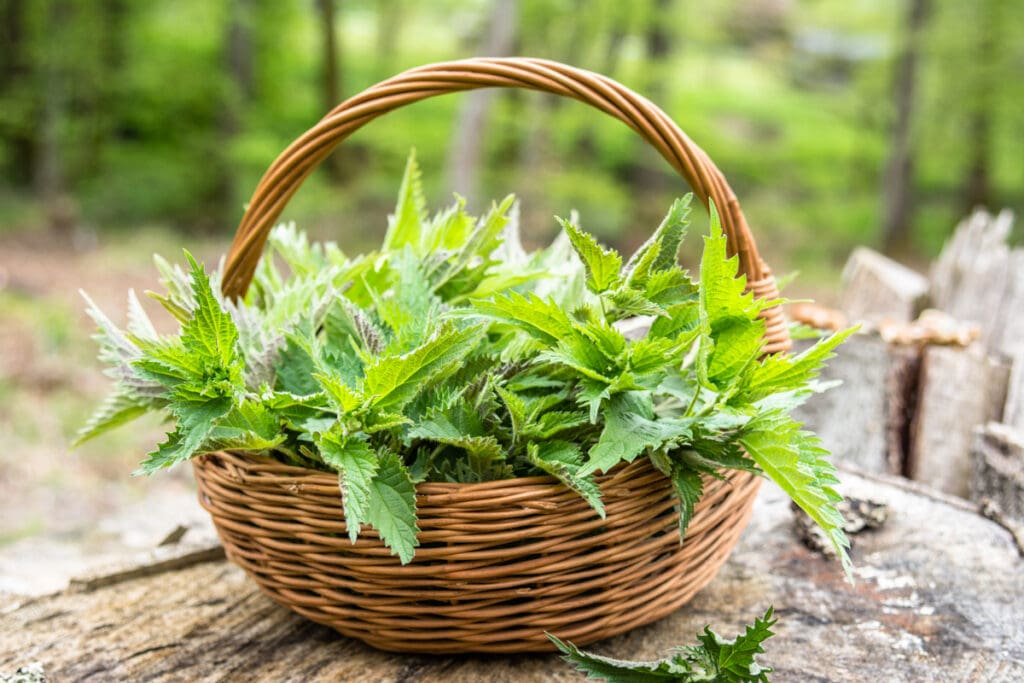
If you haven’t seen them before, you have more than likely felt them. The leaves, stems, and roots of stinging nettles are highly medicinal and grow all over the United States.
The list of minerals and healing properties of this plant is extremely comprehensive: treating anemia, boosting immune health, detoxing the body, hormonal regulation, treating bladder infections, and relieving respiratory conditions, just to name a few! It is a plant commonly found in hair products due to its high levels of silica.
Always wear long sleeves and gloves when harvesting stinging nettle, because the nettles against your skin do sting! I like to harvest a large bundle and let it dry upside down in my kitchen window, until the leaves are completely dry, and make tea or an infusion with it. I have heard people cook it similar to spinach and it makes a great pizza topping!
Learn About Foraging in Asheville From Experts
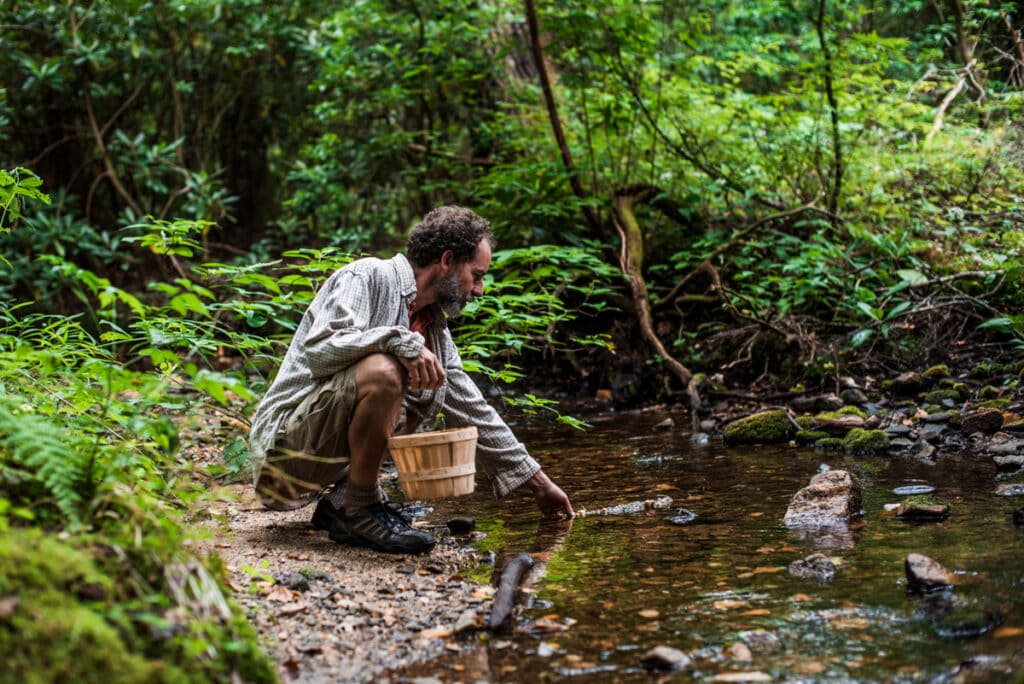
Springtime is just the beginning of foraging season in Asheville. The summer offers tons of bounties as well. I, for one, look forward to wineberries (aka serviceberries) and chanterelles.
But spring is such a great time to dip your toes into the vast world of foraging. It is an extremely rewarding hobby but can be met with some inherent dangers as well. If this is a hobby you’d like to seriously get into, Asheville is one of the best places for it, as we are lucky enough to have a plethora of guided classes with experts in the field.
These classes are an investment in peace of mind while fostering a safe and knowledgeable environment in which to learn. Here are a few of the local places that offer classes, workshops, and guides.
Things to Know Before Foraging in Asheville
When foraging in Asheville, be aware of your local laws! Always pay attention to signs and private property postings. Also, being a responsible forager is imperative – not just to the landscape, animals, and the species itself, but to you.
Be aware of where you are collecting from. Never forage from the side of the road that is sprayed with pesticides, a public park, or an establishment like the Biltmore Estate, which undoubtedly has gardeners doing the same.
The rule of thirds is to never take more than a third of the flush present – as to not over-harvest an area – and never take endangered plants or species. Oh, and fungi? Always needs to be cooked.
